ARCHITECTURAL PROJECTS
HOMMAGES
19 August, 2012
UArchitects
The scale, the place, the user and the imagination. (interview and projects' presentation)
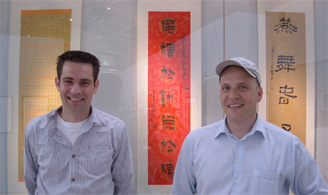
UArchitects is a collective of designers, for which the owners and the founders Misak Terzibasiyan (1964, Helsinki, Finland) and Emile van Vugt (1974, Hameln, Germany) are responsible.
UArchitects are fascinated by the interplay of levels of scale and imagination: the scale of the city and the scale of the individual; imagination in the abstract and imagination in concrete form. They do not look for the interconnection in just one relentless, they prefer to investigate it in a range of different concepts.
The differences in the nature and scale of our instructions prompt us to develop new strategies for every contract. But their design philosophy remains recognisable throughout: intuitive and reflective, and always based on their fascination for people and places. The places provide hints of the volume, orientation and materialisation we want to apply. The existing buildings help to define what has yet to be built.
They also look into the wider cultural context of architecture and urban development by organising debates and workshops. This is not designed to discover definitive answers, but to encourage questions that will lead to new thoughts and consideration.
They have "another approach to architecture and city-planning than most conceptual offices which are known from the Netherlands", as they themselves mention for their own office. Commenting the architectural scene, in general, they are convinced that architecture has to prove itself by the realization of the project over a longer period. This architecture can have a longer quality than the attractive and seductive project. They are interested in a certain harmony with the surrounding with its own singular quality. The glossy (concept) architecture which in reality proves to be a poor example is often seen in the reality. They think that is has to do with the media influence of today. Everything is nearby and reachable on demand. In this way all architecture starts to look similar in a certain way and this has to do with the render techniques but also with in real-time information exchange by internet.
Their office is looking to a more philosophical and poetical approach of architecture which can slow down this process. For a more long-term sustainable attitude.
Their built work and their proposals on architectural competitions has been many times awarded and published on Dutch and international press.
A short discussion with Misak Terzibasiyan and Emile van Vugt, regarding their general thoughts as architects, follows. Four projects of their office, of different scale, logic and uses, are also presented below.
UArchitects were awarded with A' Mention for their proposal "Piraeus Light Tower" on GreekArchitects.gr competition "Piraeus Tower 2010 -Changing the face" .
Discussing with Misak Terzibasiyan and Emile van Vugt
(questions by Maria Papadimitriou)
Α. Your projects are in complete harmony with the surrounding space. From form to materials. It is characteristic that you usually use "local" materials and sometimes you follow your own style-techniques. How important is the landscape (the place) in the selection of the materials? What is the relation between landscape and your design?
The context is important in our thinking about the project. Firstly, we try to understand and analyze the surroundings, the culture and the connections in space and time. We also study the history of the place. Besides this objective approach, our office uses an intuitive approach. This will result in a design which is in harmony with the surroundings. We think that this approach results in an architecture and a city planning of long lasting quality. However, we do not mean an everlasting quality but rather a quality that is flexible to adapt with the demands of the time. In this way we try to use the materials and textures in our projects.
We are always questioning the purpose of the material we use. In many projects we start to design the materials. This can be the texture and/or the color of the local material in order to connect with the site. We generally give the material a twist by placing the obvious material in a slightly other way. This can give the material a different meaning. So the first contact with our projects is an eye-catcher (project Maarheeze). It is a challenge for the observer to re-examine his own thoughts about perception. This is in contrast with 'fast' images and surfaces which are obvious in our media culture.
In our projects there is a logical connection with the material we use and the landscape (project Overloon) but on the other hand it shows the ambiguous relation of the project to the program of the client and of the difficulty of the program.
Β. Your architecture is sustainable. Without costly technologies, you manage, with local and renewable materials, to propose viable solutions and harmonious with the landscape. Lately, sustainability is combined with high cost technologies but you suggest environmentally friendly solutions, and perhaps more sustainable than "green technologies". Would you like to make a comment?
We see a architecture and projects over the world with only a very thin layer of sustainability. This is meant as a strong criticism that is given because of the relentlessness of this hype; be green, be less spending in energy, be cradle to cradle, be ...... and everybody is imitating each other. This is largely being strengthened by the media to come to a flat sustainable architecture. Is this wrong or right? We do not know but we can see these developments.
The best sustainability is not always visible and is partly hidden in the main concept for the project. This is still hard to understand for the critics and judges. For them, it all has to do with the direct visibility of sustainability. The more clear and obvious this is, the more convenient it will be for the client and the critics. This is the new flatness of sustainable architecture.
We have now reached the point of our attitude to the projects which we realize.
We try to do the opposite by starting the question, "What is the core of sustainability?" We use low-tech solutions which are very simple and have low costs. Each project has it is own specific sustainable character and solution. Partly, this is hidden in the project and partly it is shown. We are trying to find the low-tech logical sustainability in each project and/or assignment. This gives more benefit to the client and is less dogmatic than the green excessive technological architecture.
C. The man, the user plays an important role in your architecture. Architects often insist on the choice of the form and 'forget' that architecture is a "life container". The way you describe your projects shows a particular interest, tenderness for the user, for the human.... Especially in Juvenile detention pavilion, the careful study of the psychology of youngsters is encouraging.
Of course it all starts with the people for whom we realize buildings.
The realization of this project is the opposite of the attitude of the public opinion translated in the current right politic climate of the Netherlands.
As an office we want to see the youngster as young persons who should have the possibility to change their own future. In this way architecture creates positive conditions for the users. The youngsters had a difficult past and partly this is a result of their social and physical environment. These new surroundings (forest) and a new architecture give a new change for the youngsters. It is an open and a warm architecture which embraces a positive future and gives new hope. The building assumes a relation of respect between youngster and environment. This way it can work as a catalyst for the treatment for the young people. ...
D. You often use wood in your architecture. In Greece, wood is not used as structural material, rather as decorative. It is considered as fragile and temporary. What is your opinion?
We think that wood is a perfect material to use, whether for facades as for structural purposes. You can see this in projects in Scandinavia, Russia and the ancient China and Japan. There are still standing wooden churches (Scandinavia) and temples (Asia) which are almost everlasting. Wood is a very sustainable and an everlasting material which can grow in years to a material which can be cut and replanted. This is already done, firstly by European countries in Scandinavia and later followed to middle of Europe.
Even we have certain regulations when wood is imported from rain forests from South America or Asia. The wood must be certificated that they are cut in area were replanting is done for each tree. We think that wood has the future in the building sector like other natural material which is easy to produce.
Besides this we also use wood because of the touchability and the relation with nature. It is a material which creates a warm atmosphere while approaching and entering buildings. The first touch with a building defines a lot. A wooden handrail or a steel baluster can already create an enormous difference.
Ε. You also organize seminars and workshops. Theory vs Practice. What is their dynamic in relation to your architecture?
We organized these because of the results that we share with other architects, principals and the society. We think that sharing knowledge is in benefit for the society and gives a new input for future projects. Some were done based on an interview/movie which we made. The other was a workshop with artists and combined with the exposition of them. At first sight it did not have direct results but it reflects our profession in relation to other fields of science, art and literature. We are reflecting the content rather than a quick exchange of thoughts. We are now at the point that direct and intensive contact is more of benefit than the quick internet contact. Architecture is a profession of exchange, verbal and non-verbal communication and virtual reality cannot replace this. In this way seminars and workshops are the ideal base for depth communication which is part of our architecture.
We are convinced that architects also have a responsibility towards society. It is not a profession in which you can design perfect buildings in an office which is closed from outside. Sometimes it is necessary to start up seminars about important current themes which lead to changes in the way we live, work and move.
F. You have visited Greece. What do you think for the built environment of Athens?
It was very interesting to see that there Greece has such a rich heritage. The theoretical base of architecture has its roots in ancient Greece and nowadays it is transformed to an architecture with different styles. We have the feeling that the architects in Greece have different fields in which the profession has to be done than the Netherlands. We are not sure if this the right way to state this but many issues regarding to building technology which are common for us, we cannot retrace in the projects in Greece. It can be that the principals in Greece have different budgets for buildings than in the middle of Europe but this can explain much of the existing building environment of Athens.
G. All the best. Thank you for your time.
Thank you also for this pleasant interview. ..
New Opportunity
Dijkmeijer House, Aarle-Rixtel, Netherlands, 2007
Extension and renovation of existing house
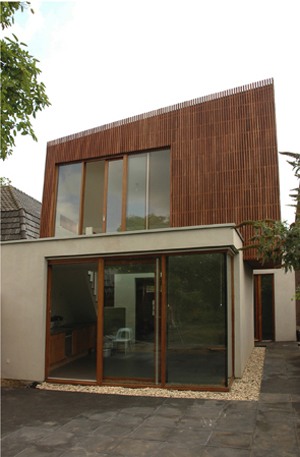
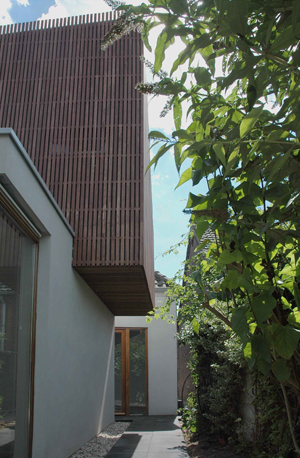
To offer new experiences to existing buildings is a challenge for UArchitects.
In Dijkmeijer House, the architects left the facade of the traditional Dutch house intact , redefined the spatiality and introduced new materials to the building.
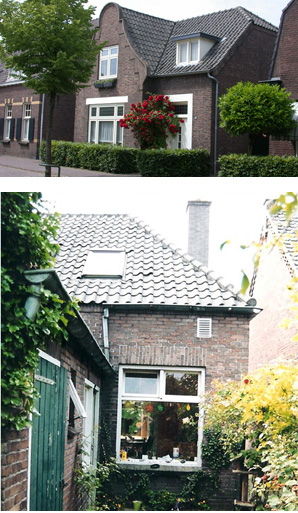
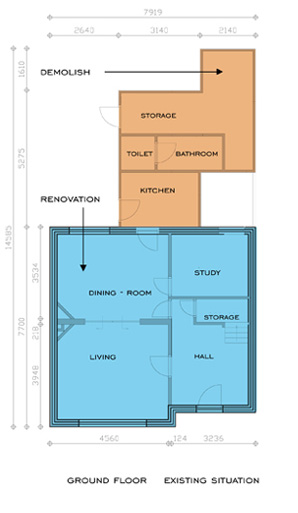
They maintained the traditional character of the existing house and the image of the village while they insert an entirely new spatial experience in the building.
The private house was built up by small rooms with limited daylight and there was no view from the living room into the long extended back-garden. The extension and the new spatial organisation create direct connections and a new experience between the existing entrance and the back-garden.
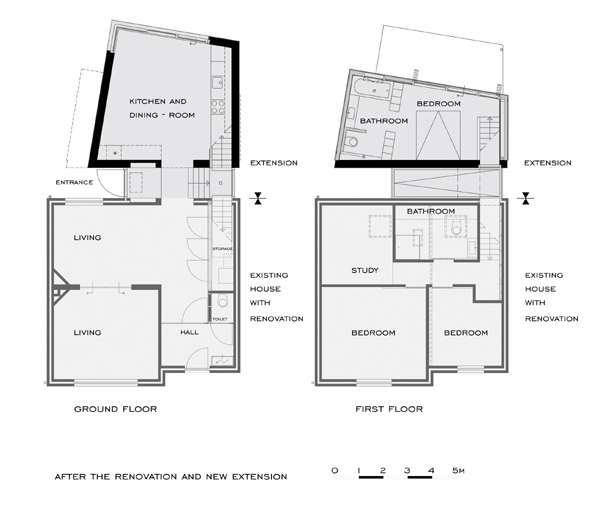
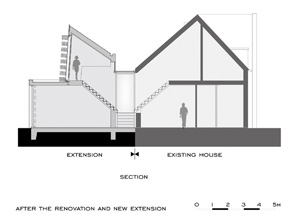
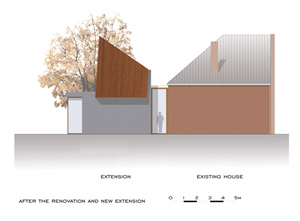
The spatiality has been thought out from the inside and it connects the existing house and the extension. The materialization and the play of colors have been organized in such a way that this continuity is perceptible in the interior by means of different sight lines, openings, connections as well as the treatment of the surfaces. The stairs and the built-in cupboards are made of the same material as the connecting stairs on the border of the existing house and the new extension.
A special treated wood, which does not rot, has been used for the facade of the first floor of the extension. The wooden laths have been fixed with an invisible, special designed fastening system on the back construction. It is a light and demountable system of wooden laths on the exterior which can be easily replaced as elements. This part of the first level has been built as wooden frame construction to make the perspective stronger with sloping planes and diagonal lines.
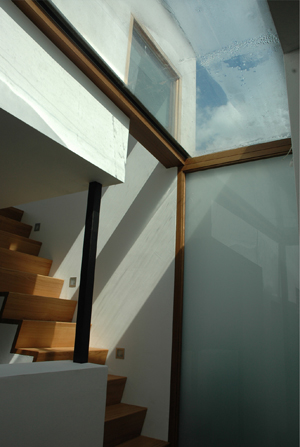
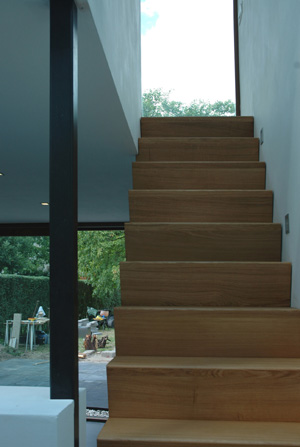
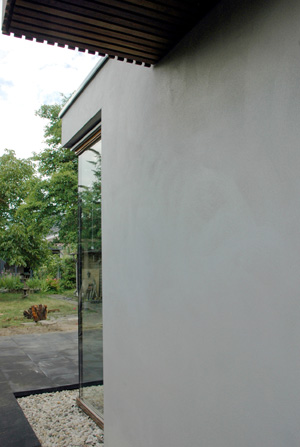
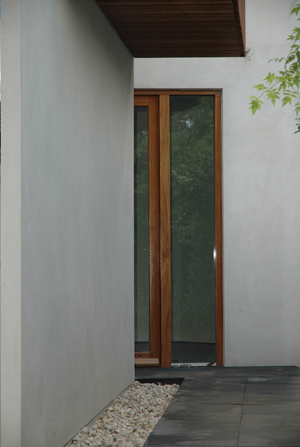
The frames of the windows have been made of dark red mahogany and are transparently painted in order to be protected against to weather influences. The walls have been made of special brick, with a thickness of 35 cm with an air insulation within the brick and with a light gray plaster as a finishing layer on the outside.
Plaster is used for the inside of the house and French Oak is used for the stairs and cabinets which are hidden under the stairs.
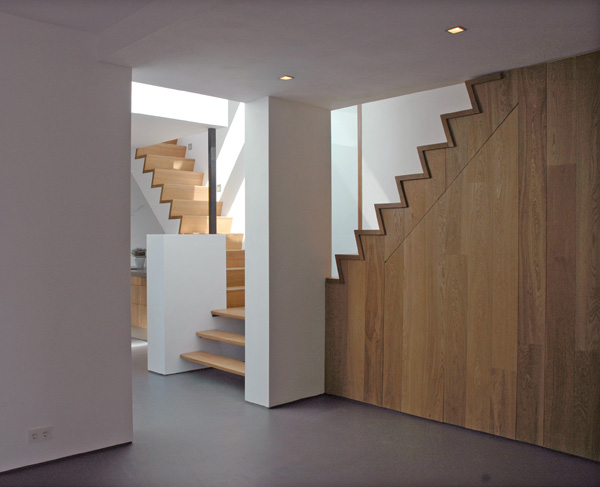
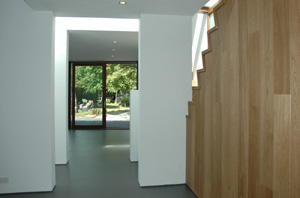
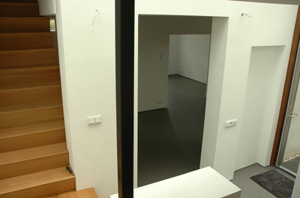
The direction and relation between location and garden takes shape. The interior and exterior is totally new in concept, connections and space through light, sequence and material on new level of experience between the existing and the new building.
Meander
Senior care housing Marishof in Maarheeze, Netherlands, 2006
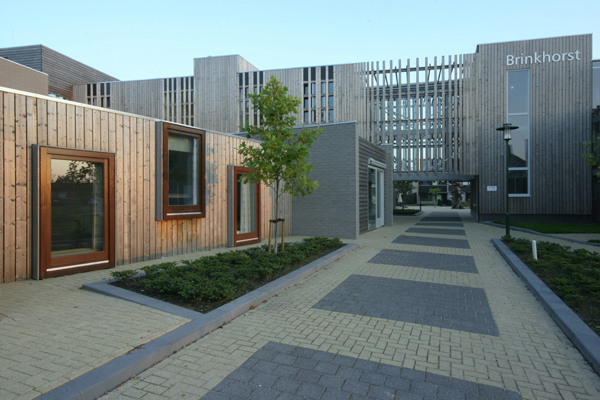
At the location of the former shopping centre "de Brink" a new care housing for elder people is realised.
This projects exists of four parts. Part A includes 30 houses for seniors which are orientated to the square "de Brink" and are an extension of the Floralaan. Part B includes 54 residential homes for more elder people. Part C is consisted of 30 rooms for elder people who need more treatment and attention. These three parts are connected by the "Meander" (part D). The meander symbolizes the phases in time which the future occupants will follow or experience.
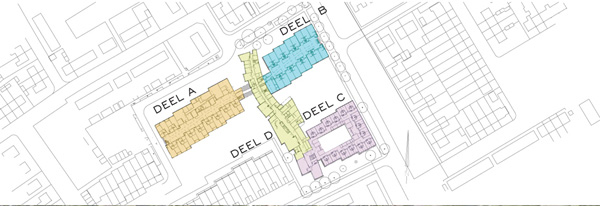
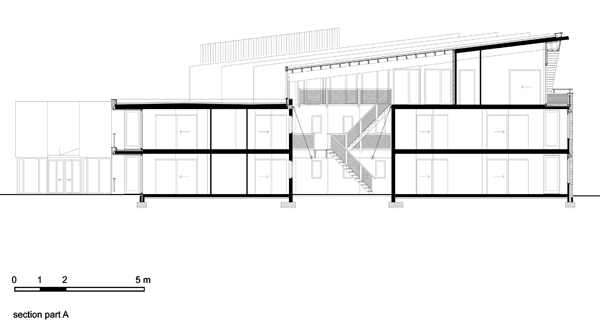

Part D is also the aorta of the complex and provides a) day care rooms, b) recreation and welfare spaces, c) treatment functions, d) management, administration and personnel offices, e) supporting services, f) space for nursery and care apartments.
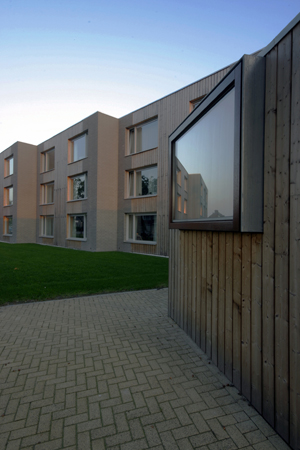
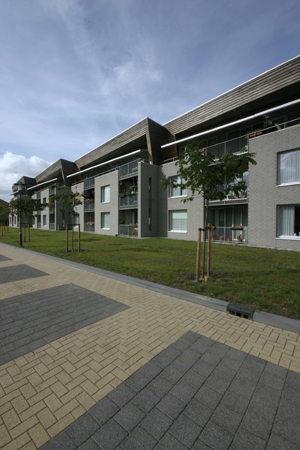
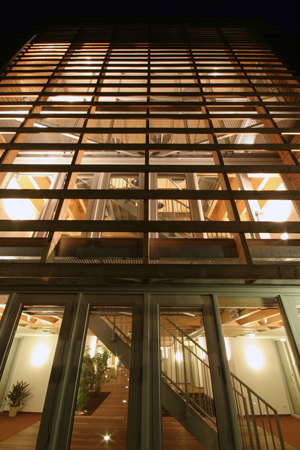
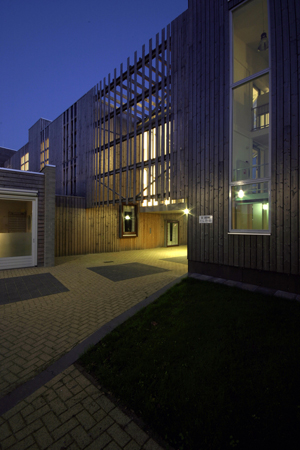
The region and the history around Maarheeze are a reason for the use of material, color and texture. It is a translation of a historical rural substance into the building. This will be visible when intensively studying the building. In small amounts, Small images of "recognition" synthesize the building. In this way the acceptance of a relative large care housing in a small community is being simplified. The materials are distracted from the rural scenery and the process of transience. After a while they show light grey patina.
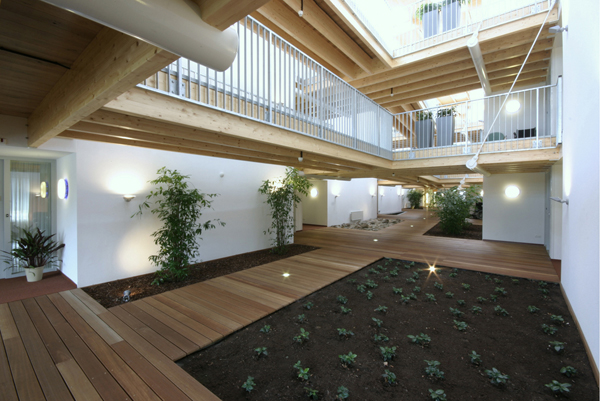
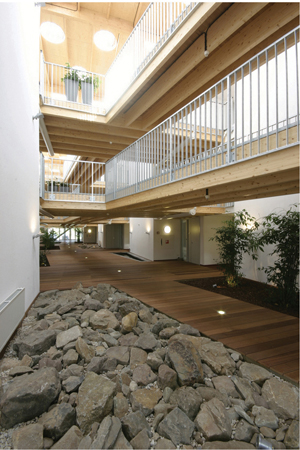
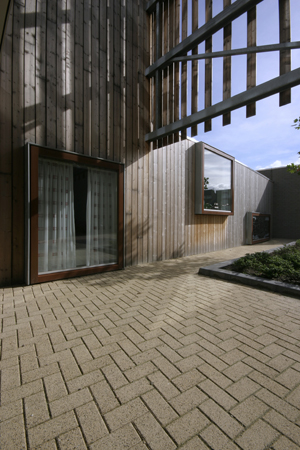
UA Architects have also developed a special concrete large brick for this project in the spirit of "Cradle to Cradle". It was produced not far from the site with low energy cost and it can be reused if necessary.
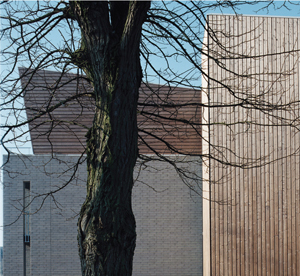
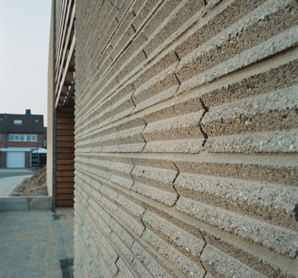
Time - Out
Juvenile detention pavilion in Maasberg, Netherlands, 2008
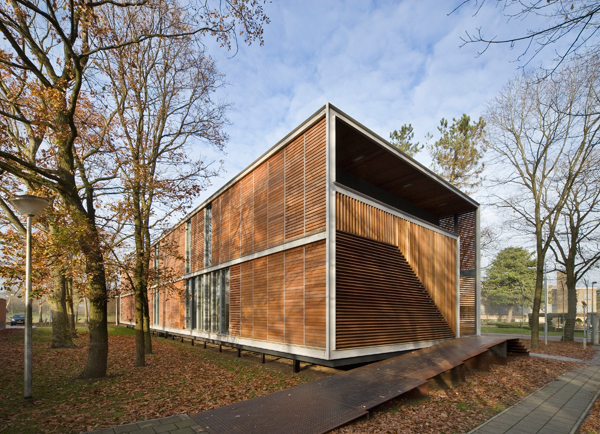
Unit 6 of "JJI De Hunnerberg, De Maasberg" in Overloon is converted from a prison for adults into an autonomously functioning juvenile detention institution. The masterplan includes the renovation of the existing buildings and the addition of new ones. The pavilion of UA Architects is the main part of the program and is used for education, visitors and offices.
It is the first prison in the Netherlands where youngsters are treated in smaller groups. So each youngster gets more treatment and coaching.
The idea of the resoluteness, of the enclosure of the institution is partly removed. A new and more intensive interaction with the surrounding nature is aimed at for the youngsters. The open structure stimulates the daily shifts between living, learning and recreation.
The initiative off the institution is to help the youngsters to return to society, as they only stay for a while and the building should emphasize this initiative.
The pavilion is a "time-out". The design does not express permanency but the opposite: it is an expression of temporality, like the stay of the youngsters.
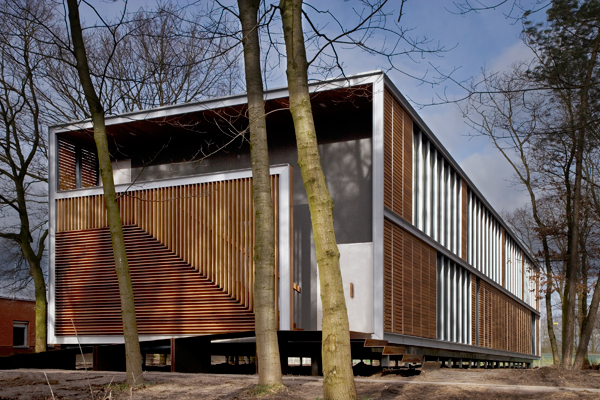
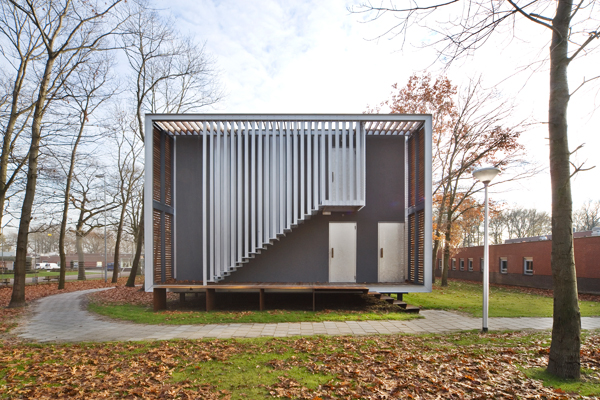
An open, transparent building is situated between the closed prison and the outside world. Visitors can throw a glance at the prison life and the youngsters can look outside, the society in which they will return later on.
The institution is situated in woodland scenery. So, the main material of the pavilion is wood. The steel frame, the wooden surfaces and the light give the impression that the volume float in the wood. The building is merged in the surrounding landscape.
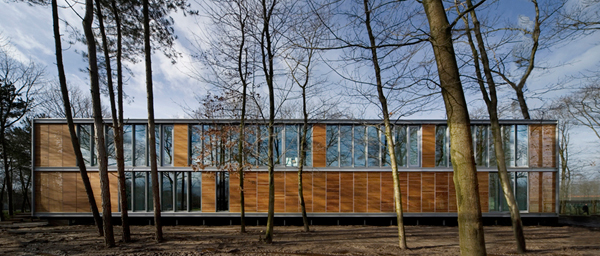
For the flexibility at future changes in the program and treatment, the construction is situated in the side edge of the plot and the façades are composed of elements which can be changed modularly.
The classrooms on the first floor and the visiting room and offices on the ground floor are functioning separately from each other by means of the two outside stairs. At the entrance of the visiting room there is a hall in which both functions are in contact with each other, dramatizing the moment of the meeting between the youngsters and the visitors.
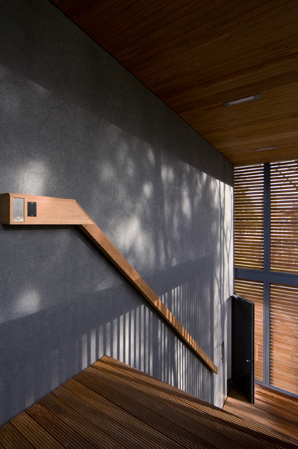
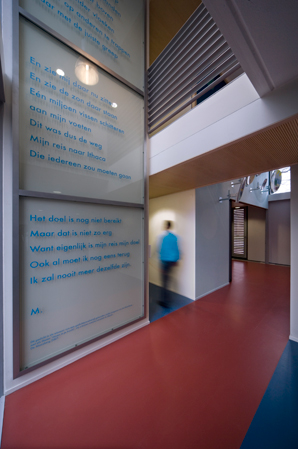
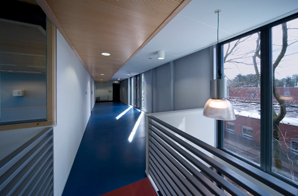
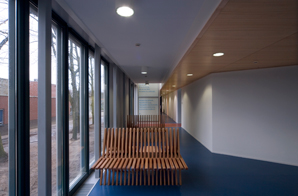
The UArchitects assume a relation of respect between youngsters and environment. The pavilion is fragile and sensitive and tries to create a new relation between youngster and environment.
The appearance and the rhythmic of the carefully detailed elements of the façade assume a respectful dialogue between environment and the youngsters. Maybe the youngsters can find a new structure, which they need to proceed their way.
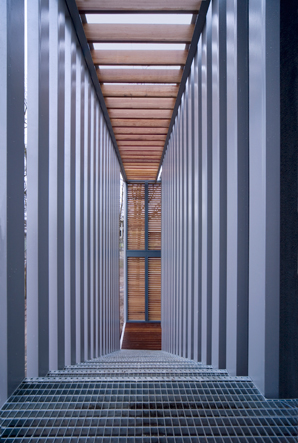
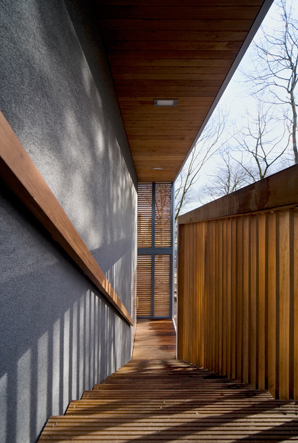
The pavilion looks like a guest in the woodland, just like the stay of the youngsters in the institution. As it has not been here for long and was not planning too either.
First prize for architecture of the province for the project Juvenile detention centre, Noord-Brabant, 2008
Short listed with juvenile detention centre Architecture Festival Barcelona, 2008
Ice Free
Salt storage and garages for snowploughs, Oirschot, Netherlands, 2007
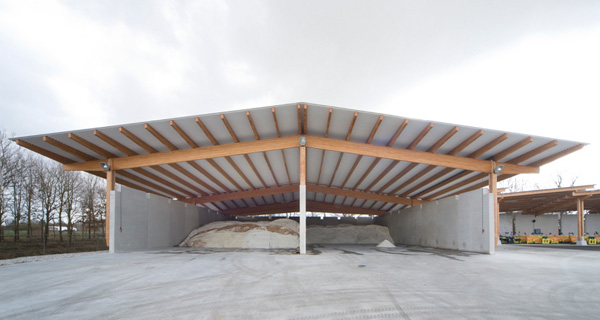
The arrangement of the plot is based on the typology of a farmyard. The different functions are organized around an open court, visible from the offices. The storage is an addition to an existing complex.
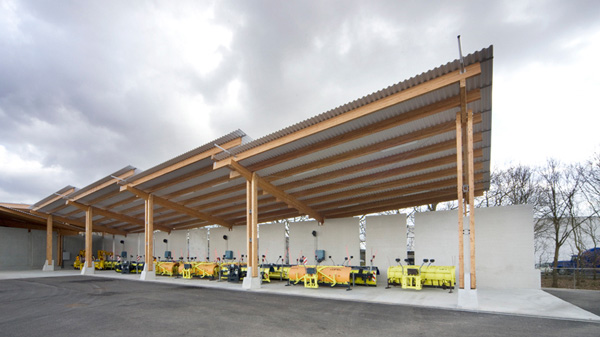
The starting point of the used materials is the extreme corrosive environment of the salt yard. The substructure is formed by the repetition of a modular prefab concrete element. This plinth frames and delimits the plot.
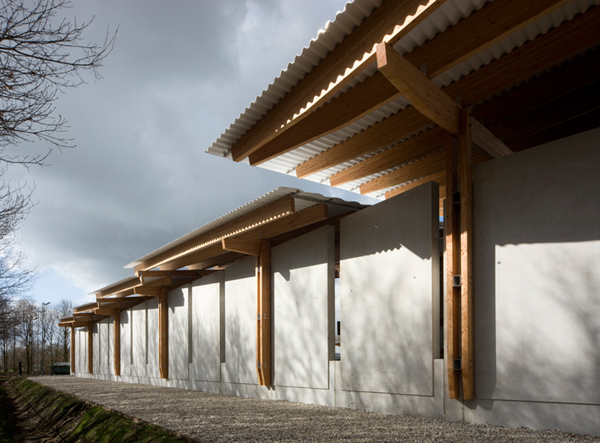
The roof is a light-footed construction which refers to breaking up Ice and covers the robust concrete substructure. The structure seems afloat due to the pronounced contrast in form and material.
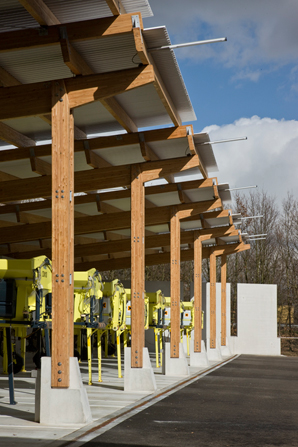
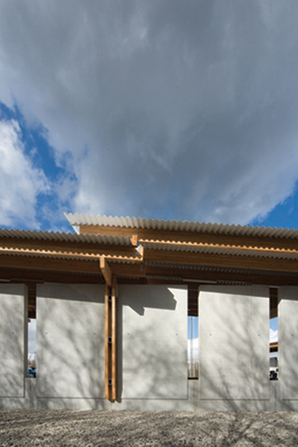
UArchitects deal with buildings of different scale. There is a quality in their design regardless the use or scale of the building. It is encouraging that young architects focus on the user and the function and not on formalism.
Information - Images: kind ciurtesy of UArchitects
Images Copywrights
Project Juvenile detention pavilion: Norbert van Onna
Project Meander: John Sondeyker and Geert Balvers
Project Ice Free: Norbert van Onna
Related articles:
- The Citadel: Europe’s First Floating Apartment Complex ( 19 September, 2009 )










